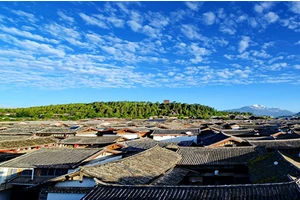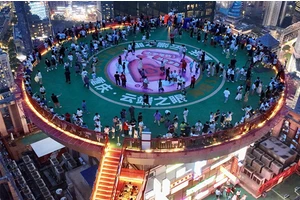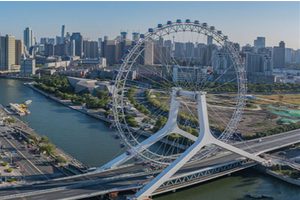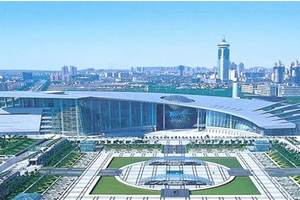Beijing tourist attractions map HD
Beijing tourist map scenic spot road map reference is as follows:
北京市(Beijing),简称“京”,古称燕京、北平,是国家中心城市、超大城市,国务院批复确定的中国文化中心、国际交往中心、科技创新中心,中国历史文化名城和古都之一,世界一线城市。当地的特色景点很多,游客可以根据路程选择适合自己的景点。
以故宫作为中心点,最近的景点是天安门广场,游客可以选择步行17分钟到天安门广场参观,也可以选择步行25分钟到王府井步行街游玩;若时间允许的,可乘坐地铁或者公交车,到更远的地方游玩,推荐前往颐和园圆明园、三里屯、天坛公园等景点。
北京的特色景点
1、颐和园
颐和园位于北京市的西北面,是中国最著名的皇家园林之一。它是清朝的避暑山庄,也是中国古代园林艺术的典范之一。在这里,你可以欣赏到精美的园林景致,感受到古代皇室的优雅和闲适。
2、天坛公园
自然环境和人文景观:天坛公园是中国古代皇家祭祀场所,占地面积达273公顷。公园内有众多古建筑和文物,如皇乾殿、祈年殿、圜丘等,还有许多花卉和树木,构成了一个美丽的自然景观。
以上内容参考:百度百科-北京市
1.北京市主要旅游景点分布图
颐和园(5A)
地址:北京市海淀区新建宫门路19号
Complete royal palace and garden. The Summer Palace, an ancient imperial garden in Beijing, formerly known as Qingyi Garden, is located in the western suburbs of Beijing, 15 kilometers away from the urban area, covering an area of about 290 hectares, adjacent to Yuanmingyuan. It is a large-scale landscape garden with Kunming Lake and Wanshou Mountain as the background and Hangzhou West Lake as the basis, drawing lessons from the design techniques of Jiangnan gardens. It is called the Royal Garden Museum and a national key scenic spot. The whole garden of the Summer Palace is centered on the 41-meter-high Buddha Pavilion on Wanshou Mountain. According to different locations and topography, there are exquisite buildings such as halls, halls, buildings, pavilions, corridors and pavilions. At the foot of the mountain, a 728-meter-long corridor is like a rainbow, connecting various buildings, green hills and blue waves. Before the Qing Emperor Qianlong succeeded to the throne, there were four large royal gardens in the western suburbs of Beijing. In 1750, in the fifteenth year of Qianlong, Emperor Qianlong rebuilt Qingyi Garden with 4.48 million taels of silver to commemorate his mother's filial piety to the queen, forming a royal garden area with eggplant and ham 20 kilometers long from the present Tsinghua campus to Xiangshan. In the tenth year of Xianfeng (1860), Qingyi Garden was burned down by the British and French allied forces. In the 14th year of Guangxu (1888), it was rebuilt and renamed the Summer Palace as a summer resort. In the 26th year of Guangxu (1900), the Summer Palace was destroyed by Eight-Nation Alliance and its treasures were looted. After the demise of the Qing Dynasty, the Summer Palace was once again destroyed in the period of warlord melee and Kuomintang rule. The pavilion is in the pavilion, with a wooden plaque engraved with royal poems on each side. The exhibition hall s is steady, magnificent and magnificent. Buddha Pavilion Buddha Pavilion is located on the mountainside in the front and middle of Wanshou Mountain.It is a building with eight sides, three floors and four eaves. The pavilion is 41 meters high and has eight giant Optimus Prime, which is a classic building with complex structure. West dike, a long dike in the center of Kunming Lake, runs through the shed from northwest to south. The lakeshore and embankment are densely shaded, showing the natural beauty near the lake and distant mountains, and full of Jiangnan sentiment. Daxialou Grand Theatre, located in Dehe Garden, is known as the three major stages in Qing Dynasty together with Yinqing Pavilion in chengde mountain resort and Yinchang Pavilion in the Forbidden City. The An Deyu Grand Theatre is for Cixi's 60th birthday, and it is for Cixi to see a play. Zhichunting Zhiting is located on an island south of Yulantang, adjacent to the east bank of Kunming Lake. It is connected with the coast by a wooden bridge. Pavilions are stacked with stones, peaches and willows are shaded, and winter goes to spring, where the ice and snow melt and the greenery spreads. It is a good place to enjoy spring and see the garden scenery.
Palace Museum (5A)
Address: No.4 Jingshan Front Street, Dongcheng District, Beijing
The fifth house in the world is the first, and crossing is very close to you. The Forbidden City in Beijing, formerly known as the Forbidden City, is the palace of 24 emperors of China in Ming and Qing Dynasties. Now it refers to the Palace Museum in Beijing, which is located in the center of Beijing. This is an unparalleled masterpiece of ancient architecture. Palace buildings are all made of wood, with yellow glazed tile roofs and blue and white stone bases, decorated with colorful paintings. The whole building is arranged along a north-south central axis, spreading to both sides, straight north and south, and symmetrical left and right. According to its layout and function, it can be divided into two parts: the external court and the internal court are bounded by Gan Qing Gate, the external court is in the south of Gan Qing Gate, and the internal court is in the north. The outer court is centered on the Hall of Supreme Harmony, the Hall of Zhonghe and the Hall of Baohe, among which the Hall of Supreme Harmony, commonly known as the Golden Hall, is the place where the emperor held the court meeting, also known as the former court. In addition, there are Wenhua Hall, Wenyuan Pavilion, Shangsi Garden and Nansan in the east wing. T Royal Garden is a place for harem beauties and emperors to play and watch. The lush pines, cypresses and bamboos are dotted in the garden, forming an evergreen garden landscape, which embodies the traditional culture of the Han people living in harmony with nature. Cixi Brand It was the residence of Empress Dowager Cixi who ruled China for eight years when she first entered the palace. She gave birth to Tongzhi Emperor here and celebrated her 50th birthday. This is about the queen who has a real name but no name. The neon of the imperial city is the guard of the ancient imperial city and the beauty of the modern city. When you come to the Forbidden City, don't forget to wait until nightfall to see the night view of the watchtower and the moat.
Gongwangfu (5A)
Address: No.17, Qianhai West Street, Shichahai, Xicheng District, Beijing
Her former mansion in Little Shenyang is now a well-preserved palace. Gongwangfu is a national key cultural relics protection unit. It used to be the residence of Xiao Shenyang and Yong Yu, located in the southwest corner of Shichahai. Prince Gong's game in 1851? As the owner of the house, Gong's name came from it. Gongwangfu, ruled by seven emperors of the Qing Dynasty, including Qianlong, Jiaqing, Daoguang, Xianfeng, Tongzhi, Guangxu and Xuan Tong, witnessed the historical process of the Qing Dynasty from its peak to its decline, bearing extremely rich historical and cultural information. Therefore, it is called a Gongwangfu, half the history of the Qing Dynasty. Gong Wangfu, as the residence of the prince of Qing Dynasty, has regular architectural layout, sophisticated technology and scattered pavilions, which fully embodies the magnificent style of the royal family and the elegant charm of the people. Gongwangfu has a large scale, which is divided into two parts: mansion and garden, with more than 30 building communities. Gardening imitates Ningshou Palace in the palace. The garden is surrounded by a mountain with a platform at the top of it. You can see the whole garden from a commanding height. The ancients regarded water as wealth. Water is everywhere in Gongwangfu. It's imported from Yuquan Lake, but it can't get in or out, so collecting money is more in line with Feng Shui theory. Among the top ten marshals in China, China, Guo Moruo and others all lived in Prince Gong, and they all lived a long life. It is said that this place is a treasure trove of feng shui. Small Shenyang is a rich country, and almost all the rare treasures are hidden here. What are you waiting for? Come and feel the wealth gt; Wangfu Back Garden Gongwangfu Back Garden integrates Jiangnan garden with northern architecture, and Western architecture with China classical garden architecture. Nine-door snacks Inby, bean juice,..................... Songzi Guanyin: When you go around behind the stone, does it look like a woman with a baby in her arms? Legend has it that little Shenyang has never had a son. Since he moved this stone, he soon gave birth to Fengšenyende, so he called it Songzi Guanyin.
Tiantan Park (5A)
Address: No.7, Tiantan Dongli, Dongcheng District, Beijing
Exploring the Mystery of Ancient Emperors Sacrifice Ceremony Tiantan Park is located in the south of Beijing, east of Yongdingmennei Street in Dongcheng District, covering an area of about 2.7 million square meters. Throughout Beijing, there are altars in the north, the Temple of Heaven in the south, the sun in the east and the moon in the west. The Temple of Heaven was founded in the 18th year of Yongle in Ming Dynasty (1420) and rebuilt in Qianlong and Guangxu years. It is the place where emperors of Ming and Qing dynasties offered sacrifices to the emperor and prayed for a bumper harvest of grain. It is the floorboard of the two altars in the Temple of Heaven, Qiuqiu and Gucci. There are two altars and walls to form an inner altar and an outer altar. The altar wall is round in the south and round in the north, symbolizing the land of heaven and earth. It is mainly built in the inner altar, with the ball altar in the south and the Gucci altar in the north. The two altars are on the same north-south axis, separated by a wall. The main buildings of the ball altar include the ball altar and the imperial dome. The main buildings of the Hall of Prayer for the New Year include the Hall of Prayer for the New Year, Huanggan Hall and the Gate of Prayer for the New Year. The Temple of Heaven has two walls, an inner altar and an outer altar. It is also known as the Temple of Heaven, where the emperor worships heaven on the winter solstice. Tianxin stone, standing in the center of the Temple of Heaven, is shouting and echoing everywhere, which is quite overwhelming. Huang Qiongyu's imperial vault is a place to worship the gods of the mound altar, and its walls are magical echo walls. No matter how small the voice is, it can make the other party hear clearly. When the voice is long, it creates an induction between man and nature.
Yuanmingyuan (5A)
Address: No.28, Tsinghua West Road, Haidian District, Beijing
Yuanmingyuan is located in the northwest suburb of Beijing, east of Haidian District. It is a world-famous royal garden. Originally a large-scale royal garden in the Qing Dynasty, it covers an area of about 5,200 mu, and its plane layout is inverted like a needle. Yuanmingyuan consists of Yuanmingyuan, Changchun Garden and Qichun Garden, with a total area of 350 hectares. The land building area of Yuanmingyuan is as big as the Forbidden City, and the water area is equivalent to a Summer Palace, with a total area of 8.5 Forbidden Cities. Yuanmingyuan combines the characteristics of several famous gardens in the south of the Yangtze River at that time, melts the essence of China, and melts poetry and painting into ever-changing scenes with the artistic technique of garden in the garden. The southern part of Yuanmingyuan is the imperial court area, where the emperor handles official business. There are 40 scenic spots in other areas, more than 50 of which directly imitate famous gardens and places of interest in other places, such as the Ten Scenes of West Lake in Hangzhou, not only imitating architecture, but also copying names. More interestingly, there are also Western-style garden attractions in Yuanmingyuan, represented by Dashuifa, Western-style fountains, flower clusters and Haiyan Hall, all of which have the style of Italian Renaissance. In the tenth year of Xianfeng, Yuanmingyuan, that is, in October 1860, was looted and burned by the British and French allied forces. In 1988, Yuanmingyuan Ruins Park was completed. Only the mountain-shaped water system, garden pattern and building foundation site are left, and rockeries, stacked stones and carved remains can still be seen. In the West Tower, it was a painful experience that made people pay tribute. History is shouting. After the baptism of blood and fire, Yuanmingyuan is like a history book of China, which is a modern American history with amazing value. Standing in front of the ruins of the West Tower, people seem to hear the cry of history. Huanghua town is located in the north of Yuanmingyuan, on the west side of western buildings, and there is an imitation European maze.It's called the Yellow Flower Array. Look out, huanghua town is lost! Dashuifa The building is shaped like a stone niche, similar to a doorway. There is a big lion spraying water under its head, forming






